The final game of the River Cats’ season at Raley Field has three outs to go, and Carole Walte doesn’t want it to end. She perches in the front row seats she secured with her late husband before Sacramento’s opener back in 2000 and looks into the home team’s dugout imploring for one final rally from “her boys.”
“Come on, let’s get ‘er done!” she shouts.
A comeback fails, but Walte hangs in until the last out, as the River Cats drop the Aug. 30 home finale to Albuquerque. The loss sums up another disappointing season for the Triple-A Pacific Coast League team, which eventually finished its 19th season in Sacramento with 55 wins against 85 losses, the second-worst record in the league and the third straight season the team finished last in its division.
Walte’s history with the team goes back to Day 1. With her husband Bill, who passed away in 2017, the couple started the River Cats booster club, connecting with majority owner Art Savage shortly after he brought the team to Sacramento from Vancouver in 1999. She calls herself the “Team Mom,” passing out business cards with that designation. With the season over, Walte bids several players goodbye as they gather their equipment bags and march past her seat, heading toward the clubhouse.
More than ever, loyal fans like Walte are essential to a team long considered one of the most successful minor league franchises in any sport. But for the first time in the River Cats’ almost two decades playing at 14,680-capacity Raley Field, the team drew less than an average of 8,000 fans per regular season game. And 2018 was the second straight season the River Cats reached a new attendance low, after it led minor league baseball in total attendance in 2015 with an average of more than 9,000 fans per game.
“I kept saying [this year], ‘Where is everybody?’” Walte says.
After that 2015 season, Sacramento’s first as an affiliate of the San Francisco Giants — who were coming off a 2014 World Series title — Forbes magazine called the River Cats the minor league’s most valuable team, putting its worth at $49 million.
The per game average of 7,808 this season is still solidly above average for Triple-A franchises, and places Sacramento at fifth in the 16-team PCL. River Cats Communications Manager Daniel Emmons points to the “ebbs and flows” of what can determine minor league attendance for any year. (A sold-out exhibition with the Giants, Emmons notes, wasn’t included in the regular-season figures.)
Emmons says that the team’s season ticket, luxury suites and walkup sales for game-day tickets remained strong. Negative impacts to sales included the lack of a game on the typically strong Father’s Day; a rare early-season rainout that turned into a single-entrance doubleheader; scheduling quirks that resulted in more Sunday day games later in the summer; and several uncomfortably hot, smoky days because of local fires, Emmons says. “The weather is one thing you can’t predict,” he says.
Sacramento has struggled to compile wins since switching from the Oakland A’s to the Giants’ affiliate. While some fans may enjoy winning baseball, victories — unlike at the major league level — don’t generally “move the needle” as a factor driving attendance for player development-minded minor league teams, says Kevin Reichard, publisher of the 15-year-old baseball industry web site Ballpark Digest.
“There’s been all sorts of polls done, but if any minor league sport had to rely on positive performance, most teams would be out of business,” Reichard says, noting that the two teams with the best attendance in the two Triple-A leagues — Charlotte and Round Rock — finished last in their respective divisions.
The first decade of the Sacramento River Cats, however, mostly disputes that claim. From the opening 2000 season through 2014, the team enjoyed success both on the field and with ticket sales. Sacramento’s top attendance season at Raley Field was 2001, when it drew more than 12,000 per game. To put recent numbers into context: In 2018, no minor league team drew more than 9,000 per game.
In the past several years, the River Cats have made several well-received enhancements to Raley Field, including a 120-foot high-resolution scoreboard, a new infield, solar panels, a play area for children and a wide array of specialty food options. Emmons says fans can expect more new features to be added in the off-season.
The River Cats partnered with CBS13/CW31 to broadcast 10 games this past season. Broadcast plans for 2019 haven’t been announced yet, but Emmons says the team was pleased with the partnership and looking forward to it continuing.
Meanwhile, Raley Field remains a key destination for ballpark aficionados, and was recently cited on the Stadium Journey website as the fourth ranked minor league baseball park in the country, out of the 160 parks with major league affiliations. Ratings were based on the ballpark food and beverage options, fan atmosphere, neighborhood and access, among other categories.
“I’ve lived my dream being at the games, getting to know the players,” Walte says. “The team has been like a second family. I still can’t give up my husband’s seat.
And, of course, she says, she’ll be back next year.
River Cats’ outfielder Chris Shaw, who was called up to the
Giants the next day, greets fans before the Aug. 30 home finale
at Raley Field. (Photos by Steve Martarano)
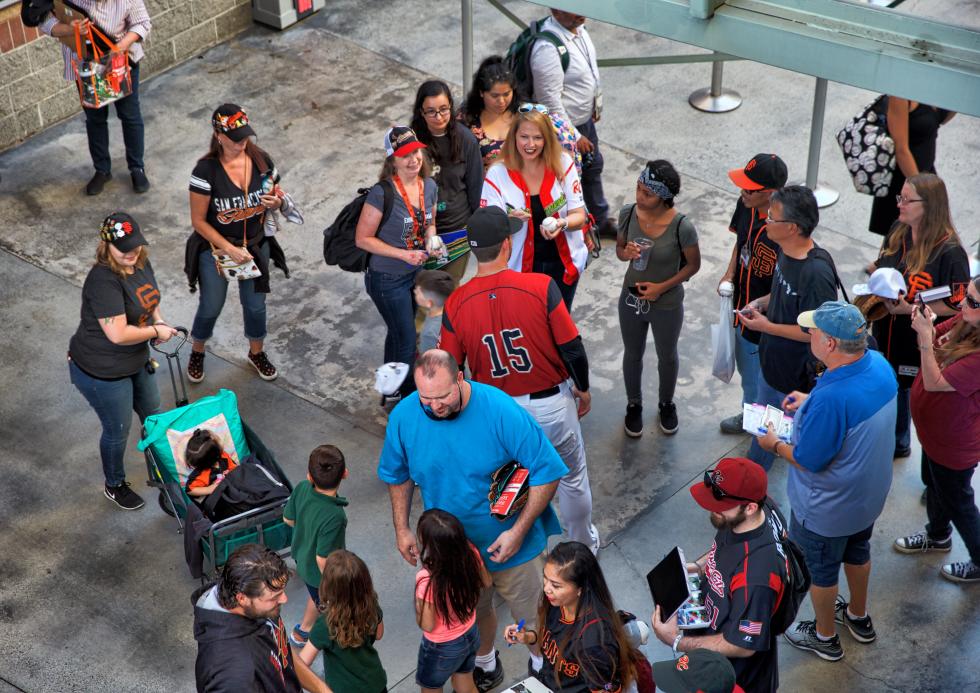
Brock Stassi, a Yuba City native, shows his frustration after
striking out during the River Cats’ home finale Aug. 30.
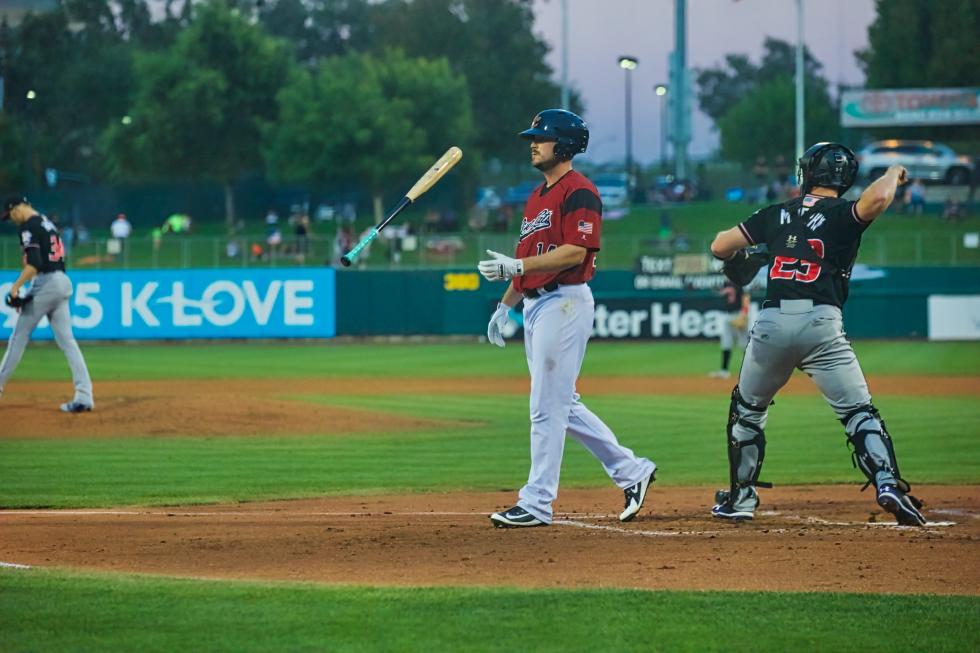
“Team mom” Carole Walte, in the same seats she’s held since the
River Cats first opened at Raley Field in 2000, hopes for a
late-inning rally that never came in the season finale Aug. 30.
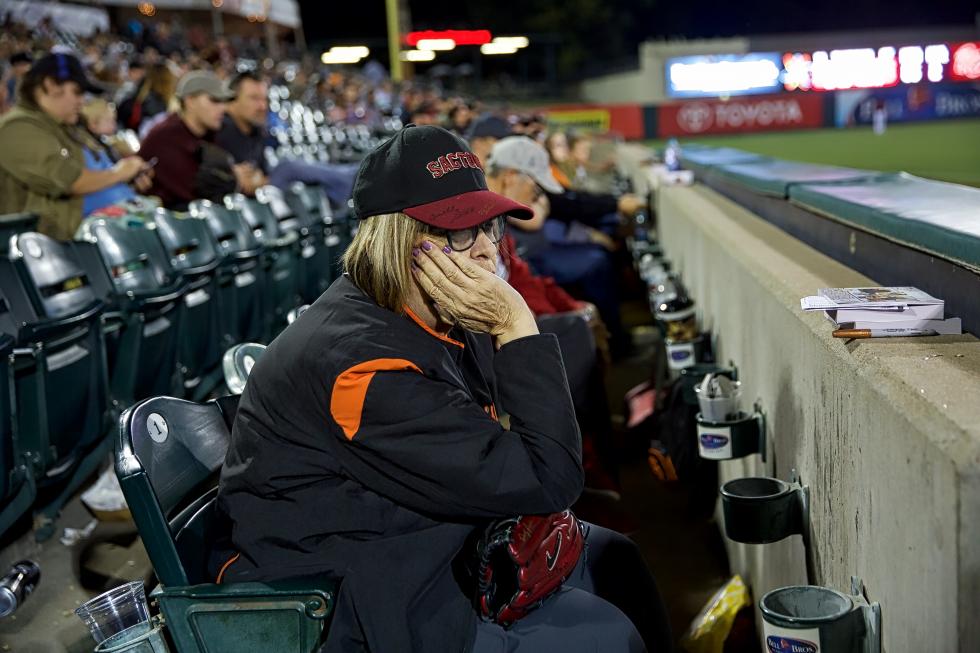
Raley Field, during the River Cats’ final home game of 2018, was
recently named by the Stadium Journey website as the fourth
ranked minor league park in the country.
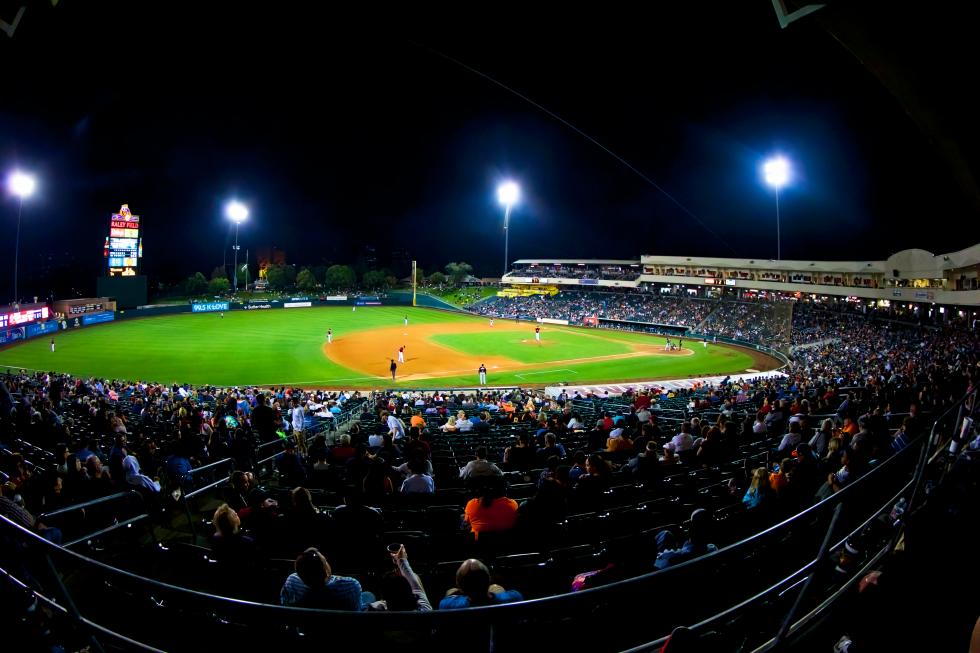
Carole Walte and River Cats catcher Ronnie Freeman after the
River Cats’ loss to Albuquerque in their home finale at Raley
Field Aug. 30.
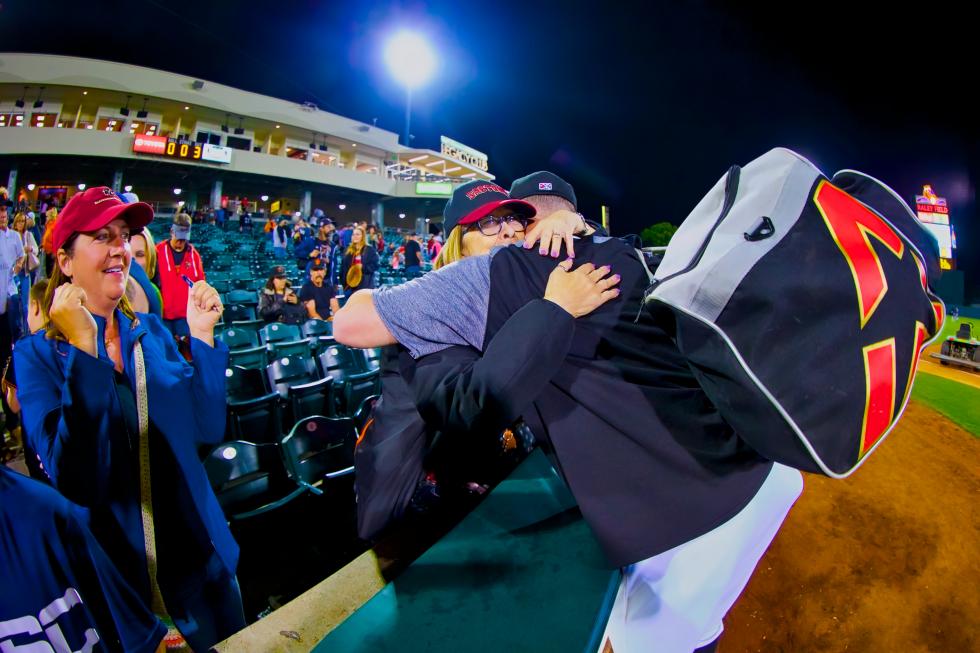




Comments
Wonderful story, Steve. Love that ballpark and the Giants affiliation with the team. You captured it well.
Yes, it is a wonderful story. Unfortunately I haven't been since the 2014 season. This is what happens when you turn your back on the Oakland Athletics. I may return in 2019 if there are games with the Las Vegas 51s. If not, it'll have to wait until 2020.
A national AAA advisor says winning doesn't matter, but it does to this fan. It is not as fun as it was when the A's ran the franchise. The A's would regularly pull up players to play in the majors; there is no such farm connection with the current Rivercats, or it doesn't seem so. Then, with the A's, you could feel the effort the players made to make it to the next level, and you could root for them to make it. Now, not so much. Doesn't surprise me that attendance is down.